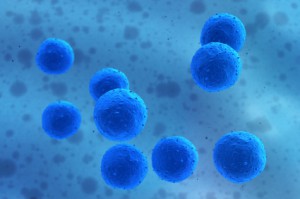At an exciting time when scientists and the public are foreseeing the clinical application of inducing pluripotent stem cells from mature somatic cells, John Gurdon and his lab group have published important findings in Epigenetics & Chromatin on the process behind nuclear programming. John Gurdon was awarded the Nobel Prize for Physiology or Medicine earlier this month for his discovery that the specialization of cells is reversible, contrary to previous belief that mature cells cannot be reprogrammed.

Currently little is known about the mechanism of nuclear reprogramming. The authors of this paper analyzed the incorporation of the histone variant H3.3 in transcriptional reprogramming following transplantation of a mature nucleus into Xenopus (frog) unfertilized eggs. In previous work, histone variants have been shown to be positively involved in cell transcriptional nuclear programming.
An important finding was that the chaperone protein, HIRA, is necessary for transcriptional reprogramming, as this is responsible for depositing H3.3. Specifically from this study, it was observed that this H3.3 deposition process and transcription are dependent on each other in somatic nuclei transplanted into Xenopus unfertilized eggs.
Determining the necessary conditions for inducing pluripotent cells from mature cells is essential to furthering stem cell research. The results from this article contribute to the possibility of bringing cell reprogramming to the clinic.
You can read the full article on the website, where you can also sign up for article alerts from the journal. For more information on Epigenetics & Chromatin, or to submit a manuscript, please visit the journal website or contact the Editorial Office.
Sam Rose
Latest posts by Sam Rose (see all)
- Raising funds for genetic diseases - 23rd September 2016
- The Epigenetics and Chromatin Clinic - 9th November 2015
- Resurrecting one of the oldest genetics journals - 23rd October 2015
Comments